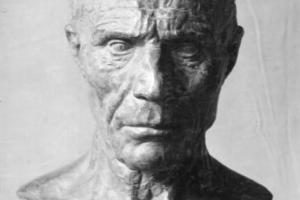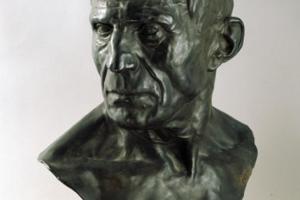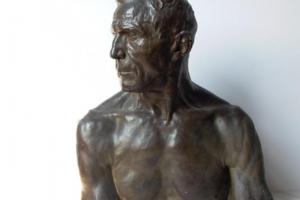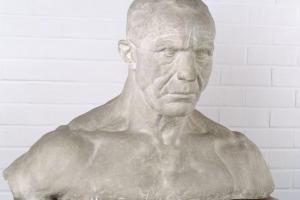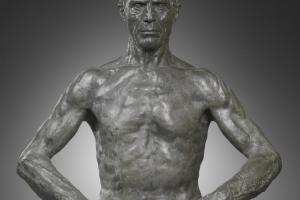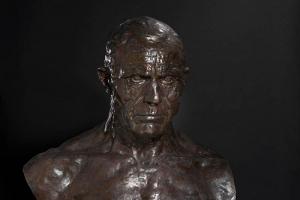Realism
After 1900 Minne received various assignments for portraits and monuments. The funerary monuments for the Osthaus family and the drawings from the period 1906-1909 already show a clear change in style towards a more true-to-nature depiction. Between 1910 and 1913 the artist abandons any form of stylising. He follows anatomy lessons at the University of Ghent and begins to work with a live model. A certain Lacaege stands as model for him and lives with the artist. During three years time, Minne studied with a resolute determination to achieve perfection in the realistic rendering of the body of the man. That results in Head of a Man from 1910, a bust from 1911 and a torso (The Docker), from 1911-1912. Lacaege also stood as model for The Ship Unloader from 1913.
The radical change of course for the artist probably has to do with the success and popularity that Constantin Meunier enjoyed with his realistic sculptures. Moreover, at that point, the Symbolism movement is already past its prime. It is worthy to note that Minne, who previously in Belgium had not known the broader appreciation that had befallen him in Germany, finally received success in his own country with his realistic works. In 1913-1914 he teaches life drawing classes at the Academy of Ghent. Minne emphasised himself that the works are not a product of spontaneous inspiration, but the result of hard work and that that they in no way bear the character of his oeuvre. That did not stop him, however, from exhibiting the heads, busts and torso regularly and to have them carried out in marble, bronze and wood. The Museum of Fine Arts Ghent has one plaster copy of Head of a Man. The Museum of Deinze and the Leie Region has a plaster copy of the bust, and bronze versions of the bust can be found in the MSK Ghent and the KMSKA.
Helke Lauwaert


